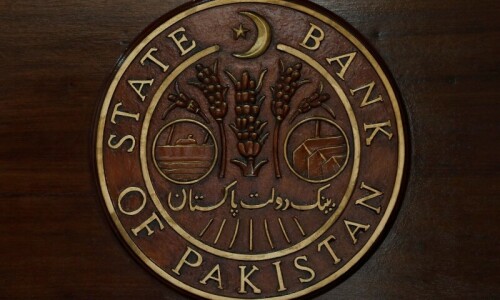- Imran says special zone to provide healthy eco-system to predators inhabiting the hills
- IWMB believes leopard population increasing in area
- Wildlife Information Centre to be established in Marghazar Zoo
ISLAMABAD: In view of the increasing leopard population in the Margalla Hills range, Prime Minister Imran Khan on Wednesday directed that a preservation zone be set up in the hills to ensure natural habitat for the endangered species.
The prime minister also approved establishment of the Wildlife Information Centre in Marghazar Zoo.
The decisions were taken in a meeting of the committee on climate change presided over by Prime Minister Imran Khan.
According to the Islamabad Wildlife Management Board (IWMB), the population of leopards in the Margalla Hills was increasing and the animal was frequently spotted by visitors of hiking trails, especially on trails 4 and 6.
The IWMB with the assistance of the Capital Development Authority (CDA) is installing fences and gates around trail 4, which will be closed after sunset. Trail 4 was opened earlier in January to control crowding on other trails and monitor illegal wood cutting.
“The special leopard zone will provide a healthy eco-system to predators, permanently inhabiting the hills,” the prime minister was quoted as saying in an official press release issued by the PM Office.
Prime Minister Khan, in principle, also accorded approval to the National Climate Change Policy, 2021 and the National Wildlife Policy, 2021.
He directed setting up of a think-tank to coordinate efforts among various ministries and devise out-of-the-box solutions for climate change mitigation. He also said Pakistan had established its credibility as a ‘Green Champion’ due to its flagship ‘Ten Billion Tree programme’, initiated by the Khyber Pakhtunkhwa government.
Mr Khan said the international community was acknowledging Pakistan’s realistic and tangible steps to mitigate impacts of climate change and directed the Ministry of Climate Change to review targets and formulate new goals, aimed at fast-tracking the steps required to preserve the natural environment.
“Preservation of the country’s national parks is paramount and stressed the need for inducting trained manpower and utilising modern technology,” he added.
The prime minister appreciated the efforts of Special Assistant to Prime Minister on Climate Change Malik Amin Aslam for environmental protection and highlighting Pakistan’s efforts in this field.
Earlier, Amin Aslam briefed the meeting about the nationally-determined contributions, climate change and national wildlife policies as well as green climate diplomacy.
The meeting was attended by federal ministers Shah Mehmood Qureshi, Syed Fakhar Imam, Mohammad Hamad Azhar and Chaudhry Moonis Elahi, National Security Adviser Dr Moeed Yousaf, Minister of State for Climate Change Zartaj Gul, Special Assistant to the Prime Minister Dr Shehbaz Gill, Balochistan Chief Minister Jam Kamal Khan and Gilgit-Baltistan Chief Minister Khalid Khursheed.
Chief ministers of Punjab and Khyber Pakhtunkhwa, Sardar Usman Buzdar and Mehmood Khan; Azad Kashmir Prime Minister Sardar Abdul Qayyum Niazi and Sindh Environment Minister Ismail Rahu joined the meeting via video-link.
The IWMB observed that unlike Ayubia, no case of attacks on livestock had been reported in the Margallas within the federal capital’s jurisdiction because there was a significant wild boar and monkey population along with barking deer in the area.
The board also observed that there were five leopards in the hills which was testament to the fact that the national park had a healthy eco-system. It also cautioned visitors on trails 4 and 6 to be careful and urged the public to trek and hike in groups and return before sunset as the leopards roam between these trails, sleep through the day and come out after dark.
“In case hikers do come face to face with a leopard, running is not an option; instead one should freeze and show no signs of fear,” the board advised.
A few months ago, the IWMB released images of a female common leopard named Shezadi found to be a permanent resident of the territory between trails 4 and 6 inside Margalla Hills National Park. Shezadi was caught on camera after traps were set up by the IWMB staff for several evenings in a row in late January. Leopards patrol and control 50 square km of the territory.
The common leopard is a critically endangered species and top predator of the park and is also very territorial by nature.
Published in Dawn, October 14th, 2021















































